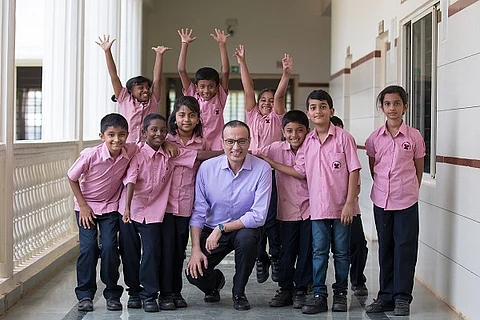

The education system in India largely follows the rote-chalk-and-talk method, and it has been this way for decades. While countries like China believe this teacher-controlled system to be a successful method, the effectiveness of this method in truly educating children has been questioned.
About half of all the 10-year-olds in India cannot read a paragraph meant for seven-year-olds, according to a report in the Economist. The Right to Education act bars schools from detaining students for failing exams up to Class 8 to ensure there are no drop-outs, but many argue that this has done more damage than good. At age 15, students in Tamil Nadu and Himachal Pradesh are five years behind their peers in Shanghai. The average 15-year-old from these states would be in the bottom 2% of an American class.
Luckily, this is something that has been recognized over the years. As a result of this, there have been several private schools coming up, as parents turn towards better systems of education. In fact, according to the Economist report, in five years, the enrolment at private schools has increased by 17 million, as against a fall of 13 million in public schools.
There are several NGOs, organizations and startups too that are looking bring about a change in the Indian education system and introduce holistic learning among children.
For Ashish Rajpal, becoming a parent sparked an interest in education. He quit his job in Paris and went back to study education at Harvard Graduate School of Education. He then returned to India and tried out different models of education change including teacher training, consulting, setting up new schools but found no success and ended up becoming a fourth-grade science teacher.
And that’s when he figured out what was required - a tangible, detailed, actionable path for teachers that could be followed every day.
And that’s why he founded XSEED in 2008.
XSEED’s solution is a practical teaching toolkit for a school to educate any child based on a scientific five-step learning process.
“For all children to become confident thinkers and skilled problem solvers who succeed in 21st century workplaces, the “rote-chalk-and-talk” way of teaching prevalent inside classrooms has to change. XSEED takes every concept taught to children, say properties of air, and breaks down into five simple steps,” says Ashish.
The five-step process includes making the objective clear to children, conduct a hands-on activity to experience it, encouraging questioning to grasp the concept better, apply this knowledge to a real-life challenge, and finally assess what children learn.
The toolkit that XSEED provides to schools has a bunch of elements.
First element is a Student Pack consisting of content books and work books, XSEED digital, and a skill-based assessment for students and teacher lesson plans. It also includes professional development for teachers, principals and the management, and conducts regular assessment and feedback for teachers, which ensures there is quality education being imparted.
XSEED’s books and workbooks align with the syllabus of the education boards such as ICSE and CBSE as well as boards in Tamil Nadu, Maharashtra, and Karnataka.
XSEED has a repeatable product-cum-service model. Schools are charged a one-time fee to license the program and parents parents invest annually through the school through purchase of student resources starting from Rs 750 to Rs 3,500 a year.
Ashish Rajpal, founder, XSEED
XSEED now has a presence in nearly 3,000 schools across eight countries. The company claims to be educating over a million children through 75,000 re-skilled teachers.
“We work with all kinds of schools including some of the most-well known schools in the country along with aspiring institutions in small tier 2 and 3 towns,” says Ashish.
XSEED says that while there are other trying to replicate what it does, those offerings often don’t have real results.
“Unlike many education products, XSEED actually works in the classroom, visibly enhancing curiosity, communication and higher order thinking skills in children. We built this company with a passion to improve education and have the commitment to stay in for the longer term. We have built a strong capability in the learning, teaching, and assessment of K-8 children and now we are augmenting this with educational technology (EdTech) expertise,” Ashish adds.
It claims that according to a study in 2014, XSEED children outperformed their peers in non-XSEED schools by up to 20% on an average and even more on higher-order skills.
Experts say that parents are today ready to shell out a good sum to ensure their children receive the best education. This is probably why even today, after-school tuitions are extremely popular. They fill the gap of being able to help students grasp concepts better.
Given the fact that parents are beginning to recognize the importance of holistic and quality education, there is a huge scope for solutions like the one XSEED provides.
And a testimony to this is the fact that XSEED has turned profitable and growing its user-base rapidly.
In 2010, it raised $10 million (around Rs 67.5 crore) from Lighthouse’s India 2020 Fund. Following this, in 2016, Series B round it raised an undisclosed sum from Belgian investment firm Verlinvest.
And at a time when technology is playing a very important role in education, XSEED acquired Pleolabs, an EdTech product startup to augment its capability in digitally enabled learning.
XSEED’s immediate goal now is to reach 10,000 schools and educate 10 million children in the next five years. It wants to replicate this model across schools in different countries while strengthening its presence in India.